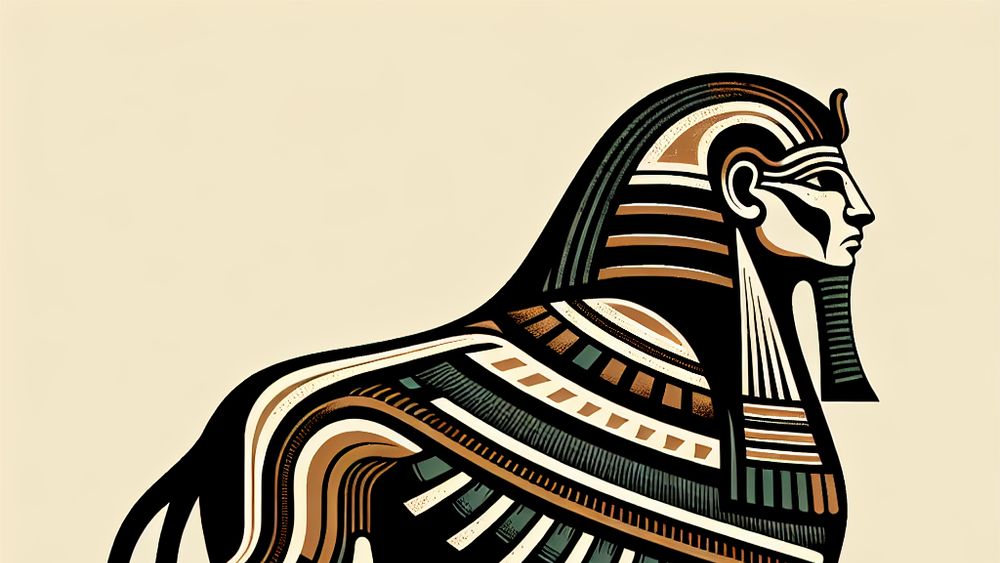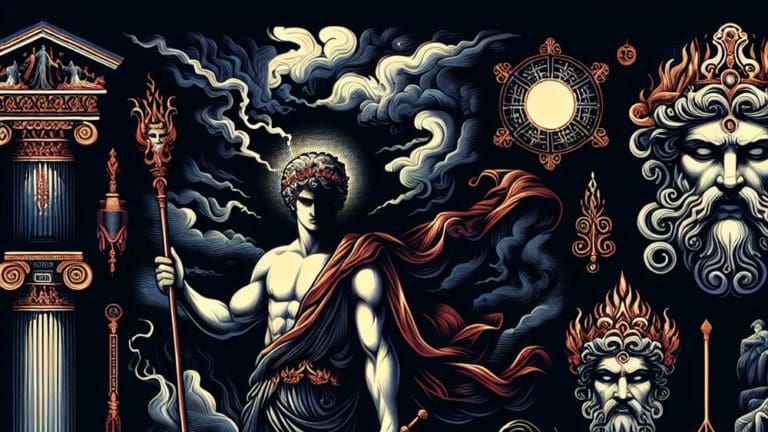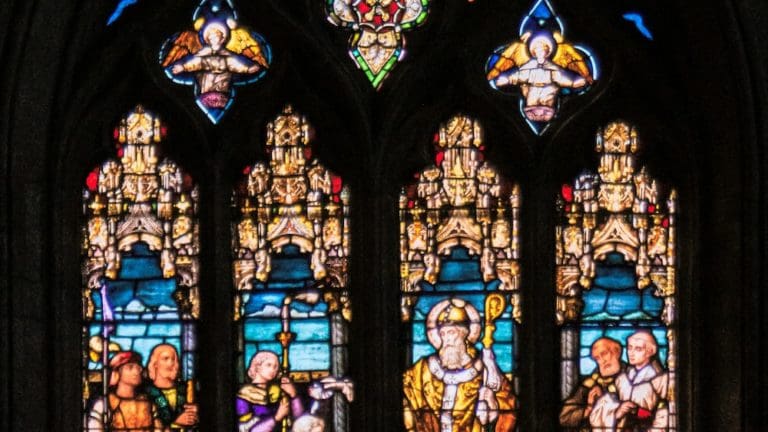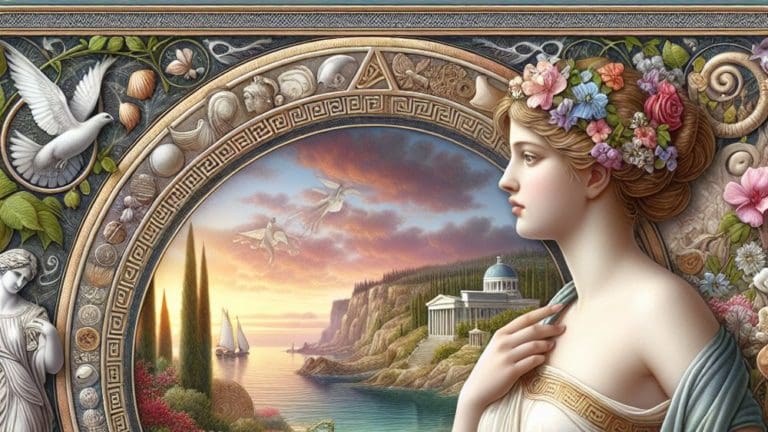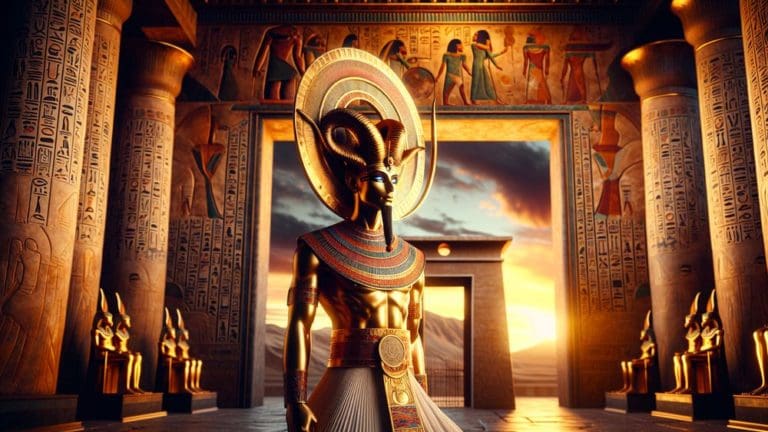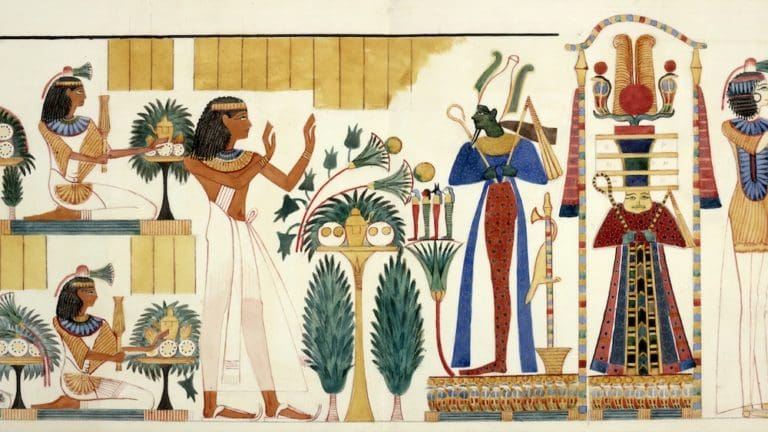Egyptian Mythical Creature: The Criosphinx Uncovered!
Egyptian Mythical Creature: The Criosphinx Uncovered!
The magic and mystery of ancient civilizations have always fascinated us, and when it comes to Egypt, the allure is undeniably strong. Among its many legends and tales, the Egyptian Mythical Creature: The Criosphinx, stands tall and proud, embodying the rich tapestry of Egyptian mythology. This creature, less known than its lion-bodied counterpart, is a marvel waiting to be uncovered.
Key Points:
- The Criosphinx is a mythical creature from ancient Egyptian mythology with the body of a lion and the head of a ram, symbolizing protection and divine authority.
- It originated from ancient Egypt, particularly prominent during the New Kingdom era under Amenhotep III.
- Criosphinxes were guardians of sacred places believed to offer protection and guidance to the pharaoh in the afterlife.
- This creature played a significant role in Egyptian culture, reflecting the intertwining of religion, royalty, and art.
- Comparisons with other sphinx variants reveal the unique symbolism and significance of the Criosphinx in Egyptian mythology.
- The Criosphinx also made appearances in Greek mythology with a different portrayal, adding a layer of menace.
- In modern times, the Criosphinx continues to be depicted in media and literature, maintaining its mystical allure and connection to ancient Egypt.
Dive with me into the world of ancient myths where creatures of power roamed the earth and gods walked among humans. The Criosphinx, with its intriguing mix of animal features, has been a symbol of protection and majesty in Egyptian culture. Let’s unravel the stories and discover the secrets that this unique sphinx variant has been keeping for millennia.
Unveiling the Criosphinx: A Marvel of Egyptian Mythology
Hold onto your hats, because we’re about to dive deep into the heart of ancient Egypt, where the Criosphinx reigns as a lesser-known yet fascinating creature. This mythological marvel, with its unique features, stands out in the crowded field of Egyptian mythical creatures. Ready to meet it? Let’s go!
Origins and Historical Significance
The Criosphinx originates from the vibrant mythology of ancient Egypt, where creatures of great power were a commonplace in the narratives of gods and mortals. This particular sphinx variant is distinguished by the head of a ram, symbolizing the god Amun, and was seen as a guardian of sacred places. The presence of Criosphinxes in temples and tombs was believed to offer protection against evil and guide the pharaoh’s journey in the afterlife.

During the New Kingdom era, particularly under the reign of Amenhotep III, the Criosphinx found its peak of prominence. Lining the avenues leading to significant architectural marvels, these creatures served as both protectors and symbols of royal power. The connection to the god Amun was especially significant, as it underscored the pharaoh’s divine right to rule and his relationship with the gods.
In terms of historical significance, the Criosphinx reflects the deep intertwining of religion, royalty, and art in ancient Egyptian culture. Its dual role as a protective entity and a symbol of divine authority illustrates the complex belief systems that underpinned Egyptian society.
The Criosphinx symbolizes divine authority and protection in ancient Egyptian culture, reflecting the intertwining of religion, royalty, and art.
Physical Description and Symbolism
Get ready to picture this – the Criosphinx is an awe-inspiring creature combining the body of a lion with the head of a ram. Now, why a ram, you wonder? Well, it’s all about symbolism, baby!
- Body of a lion: Represents strength and royal power
- Head of a ram: Symbolizes the god Amun, associated with fertility and regeneration
This combination was no accident. It was a carefully curated symbol of protection, power, and divine blessing. The Criosphinx wasn’t just a cool statue; it was a loaded signifier in the rich visual language of ancient Egypt.
The Criosphinx in Ancient Egyptian Culture
When it comes to their role in ancient Egyptian culture, Criosphinxes were not just lawn ornaments for the gods, alright? They had jobs to do. Let’s break down their gig in ancient times:
- Protection: Standing guard at temples, they were like the ancient world’s bouncers, keeping the bad vibes out.
- Symbolism: Representing Amun and the pharaoh’s divine rule, they were a big deal in the PR world of ancient Egypt.
| Function | Location | Symbolic Representation |
|---|---|---|
| Guardian | Temples | Protection |
| Royal Symbol | Royal Edifices | Divine Authority |
In the world of ancient Egyptian architecture, these creatures were star players, embodying the intersection of religious belief, royal power, and artistic expression. The Criosphinx was more than just a pretty face; it was a key player in the narrative of ancient Egyptian civilization.
The Criosphinx Across Cultures and Literature
The Criosphinx, an awesome Egyptian mythical creature, didn’t just chill in ancient Egypt; it traveled across cultures and popped up in literature like a seasoned globetrotter. It’s fascinating to see how this mythical creature with the body of a lion and the head of a ram made its way into stories and myths far from its sandy beginnings.
Comparisons with Other Sphinx Variants
When you stack the Criosphinx against other sphinx variants, things get interesting. Most sphinxes sport a human head, but our ram-headed friend likes to be a bit different. The lion’s body is a common feature, though, because apparently, nothing says ‘mystical guardian’ like a big cat’s body.
The Androsphinx, with its human head, and the Hieracosphinx, flaunting a hawk’s head, are like the Criosphinx’s cousins. What separates the Criosphinx in this mythical family portrait is its ram head, symbolizing Amun, the Egyptian god of the wind. It’s like each type of sphinx had a different role in the mythology, from guardian to emblem of divine power.
Each type of sphinx in mythology had a distinct role, from guardian to emblem of divine power, with the Criosphinx standing out with its ram head symbolizing the Egyptian god of the wind, Amun.
The Criosphinx in Greek Mythology
Tying the Criosphinx to Greek mythology is like adding a twist to its tale. Unlike Egyptian mythology where sphinxes were generally benevolent, the Greek version added a layer of menace. Think riddles and creature that won’t let you pass unless you crack them. However, the Criosphinx itself doesn’t play a big part in Greek myths.
It shows how cultures adopt mythical creatures and tweak them to fit their own narratives. The Greeks were big on adding those riddle-loving, winged versions to their stories. Yet, they appreciated the Criosphinx enough to give it a nod, intertwining Egyptian influence with their unique spin on mythology.
Depictions in Modern Media and Literature
Fast forward to modern times, and the Criosphinx is still catching eyes in media and literature. This Egyptian mythical creature adds an exotic flair wherever it appears, from fantasy novels to video games.
- Movies like “The Mummy” give a nod to Egyptian lore, including sphinxes.
- Fantasy novels often feature sphinxes as wise beings or mystical guardians.
- Video games, such as Assassin’s Creed Origins, let players explore ancient Egypt, complete with sphinxes to marvel at.
In each depiction, the body of the lion and the head of the ram are big visual clues, connecting these modern interpretations back to the Egyptian sands where it all began.

The Criosphinx continues to captivate modern audiences through various forms of media, maintaining its exotic allure with its distinctive lion body and ram head.
FAQs
1. What distinguishes the Criosphinx from other types of sphinxes?
What distinguishes the Criosphinx from other sphinx variants is primarily its head. Unlike others that may feature human or bird heads, the Criosphinx boasts a ram’s head. This distinct feature sets it apart, emphasizing its connection to the god Amun.
2. Where can Criosphinxes be found in ancient Egyptian architecture?
Criosphinxes can be found in ancient Egyptian architecture, particularly within temple complexes like Karnak. They line processional avenues, standing as guardians to sacred spaces, demonstrating the creature’s protective role in ancient beliefs.
3. How has the image of the Criosphinx evolved in modern culture?
The image of the Criosphinx in modern culture has evolved to incorporate elements of mystery and magic. It often appears in fantasy novels and films, surrounded by an aura of ancient wisdom, as a guardian of hidden knowledge or treasure.
4. Are there any notable myths or stories specifically about the Criosphinx?
Notable myths specifically focusing on the Criosphinx are somewhat scarce, as it often shares the limelight with other Egyptian mythical creatures. However, it represents divine authority and protection, blending seamlessly into broader mythological narratives.
Conclusion
The journey through the realm of the Egyptian Mythical Creature: The Criosphinx reveals a creature of power, guarding the sandy thresholds of mythology and reality. From its ram-headed visage to its stony embrace within ancient architecture, the Criosphinx stands as a testament to Egypt’s rich mythological tapestry. And as we’ve seen, whether it’s guarding temples or featuring in modern tales, this mythical creature captures our imagination, inviting us to explore the ancient and the mystical.
Thanks for joining me on this enchanting walk down Egypt’s legendary lanes. I’ve had a blast uncovering these tales with you. Stay curious, and keep exploring the myths that have shaped our world. Until next time, Cedric.

